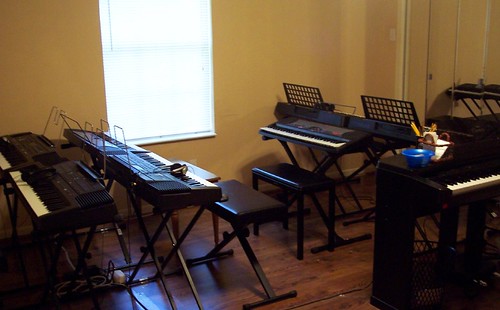
Group lessons means working together! It is vital to realize that group piano lessons are not just several people in the room at the same time. Singing , dancing, drumming and playing notation games together are activities which capitalize on the psychology of group participation.
Consider these contrasts between group and individual musical learning:
*Singing with a group is relaxed and fun. Singing alone can cause anxiety since so much attention is fixed on accuracy.
*Beat and rhythm are best experienced as part of a group. How can one learn to move expressively to music or follow a conductor by only practicing alone?
*Dancing and drumming create a joyful dynamic within a group. Here, the group synergy produces a mutually-enhancing experience whose whole surpasses the sum of its individual parts.
*Motivation through peer interaction is most effective. Prompting from an adult clearly takes second place and self-motivation will come later with maturity.
*Thorough deep learning occurs as a result of the group's multi-track approach to singing, moving, listening and discussing. Private lessons often end up dealing primarily with a student's own technical challenges.
As a group approach to piano study, Musikgarten capitalizes on the child's love for participating in activities with other children. The beginning piano student longs to be part of a group, especially one of peers. The group setting creates an ideal learning environment for children, and is especially ideal for music learning.
(adapted from Music Makers: At The Keyboard Teacher's Guide year 2)

